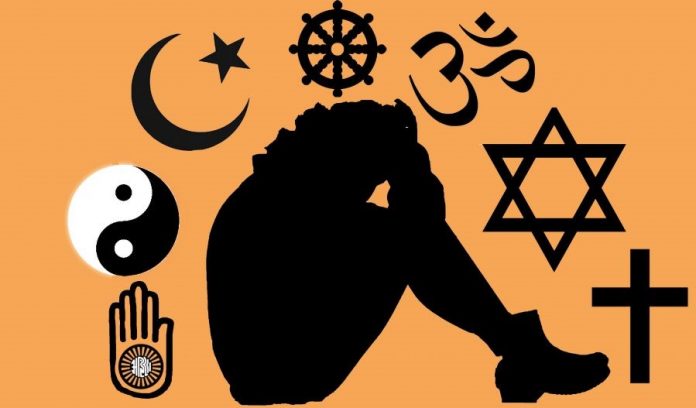This article is written by Abhilasha Patter.
Table of Contents
Introduction
The recently introduced Uttar Pradesh Prohibition of Unlawful Conversion of Religion Ordinance, 2020 has faced staunch opposition by certain sections of society. Despite the ordinance proposing measures to safeguard victims from fraud, coercion and misrepresentation, the ordinance still faces criticism due to the circumstances of its propagation, i.e. the private religious affinities of the serving chief minister of Uttar Pradesh Yogi Adityanath.
Even though the proposition treats all religions equally, and is in accordance with the fundamental rights to freedom of religion and Liberty to marry a person of one’s choice, critics still try to find fault where there is none to pick at. Providing an example of the demographic that the ordinances have an impact on, this article shines light on the affirmative impact that the widespread implementation of such an ordinance could have on rural India.
The promulgation of the Uttar Pradesh Prohibition of Unlawful Conversion of Religion Ordinance, 2020, on the 27th of November, became a controversial affair sparking debates throughout the country. The proposed law termed as “Uttar Pradesh Vidhi Virudh Dharma Samparivartan Pratishedh Adyadesh, 2020” is a precautionary provision, providing safeguard to protect the victims of fraud, coercion and misrepresentation.
The ordinance has generated a lot of outrage, especially from the self-proclaimed ‘liberals’ who view this as an attempt to target the Muslim community. Perhaps the optics of a “Hindu Yuva Vahini” Yogi Adityanath passing such an ordinance given his repeated warnings against a phenomenon termed as love jihad, has led many to buy into the prevalent fearmongering. Certain sections of our society communalise the ordinance using the private religious affinities of the Chief Minister as ‘justification’ for bogus claims, they go on to form a voice of opposition fundamentally flawed with its biases.
In the backdrop of the controversy stirred up by the promulgation of the ordinance in Uttar Pradesh, the author draws on the merit of the same and the necessity of the nationwide implementation of similar laws prohibiting unlawful conversions of religion, be it under the name of love or a bag of rice.
What does the Ordinance entail?
The ordinance provides the strengthening of the procedure for religious conversions, adding a certain level of complexity to the process by increasing the number of steps and the time period required to achieve it. This not only ensures that the victim is provided with a buffer period to seek help but also gives them time to re-evaluate their decision of converting to a different religion.
The procedure requires the individual seeking conversion and the person performing the conversion to submit a declaration of the same 60 and 30 days in advance respectively, to the office of the concerned District Magistrate. The District Magistrate will then conduct a detailed enquiry with respect to the intention and purpose of the proposed conversion.
Furthermore, once the conversion has occurred, the converted individual is to submit a self-attested declaration within a period of 60 days. This is followed by the public exhibition of the declaration and recording of objections by the District Magistrate. The converted individual is then required to appear before the office of the District Magistrate to establish their new identity within 21 days of sending the declaration, and confirm its contents.
The ordinances illegitimatise the conversion of religion made on the sole basis of any of the following: force, misrepresentation, undue influence, allurement, fraud, and marriage. The burden to provide evidence proving the lawfulness of the conversion is assigned to the person facilitating the same. The provisions, however, permit the reconversion of an individual to their immediate previous religion without having to follow this extensively strenuous procedure.
The offence of unlawful conversion under the proposed ordinance provides for punishment varying in severity with respect to who the victim is, in addition to a fine. These offences are characterised by their cognizable and non-bailable nature. Furthermore, the accused is liable to pay compensation of up to five lakh rupees to the victim of conversion as compensation under civil law. Repeat offences of this nature will be subjected to double the punishment specified for the respective offence.
The Uttar Pradesh government’s initiative has led as many as five Bhartiya Janata Party ruled states promise either the amendment of the existing acts or the introduction of new acts regarding the same. This has triggered criticism on many fronts.
Contentions
The first contention on the proposal of the ordinance seems to suggest that the right to propagate one’s religion extends to include the right to conversion, the essence of which is violated by restricting easy access to the same. Further accusations include the alleged unconstitutionality of the Uttar Pradesh government’s law and its apparent violative nature in the context of the fundamental right to practice and propagate religion as guaranteed by article 25 of the constitution. The ordinance is further accused of targeting interfaith marriages and of particularly persecuting members of the Muslim community.
The Supreme Court in the judgment of Rev Stanislaus vs State of Madhya Pradesh, however, has established that “if an attempt is made to raise communal passions, e.g. on the ground that someone has been “forcibly” converted to another religion, it would, in all probability, give rise to an apprehension of a breach of public order, affecting the community at large.”
It further says that the right to convert is no fundamental right and propagation of religion should be subject to restrictions as it only indicates persuasion and exposition without coercion. The Apex Court in the same case also held that forceful conversion if not prohibited would lead to public disorder.
Contrary to popular belief, the Uttar Pradesh Prohibition of Unlawful Conversion of Religion Ordinance, 2020 does not restrict a consenting adult from getting married to another consenting adult, provided they follow the circumstantial procedures laid down by it. The ordinance provides that the marriages taking place under unlawful circumstances are to be held void.
Furthermore, this is only applicable if the converting individual does not wish to marry under the guidelines laid out by the Special Marriage Act, 1954, a law made for the purpose of simplifying and easing the process of marriage between couples of different personal laws. The sole requirement for the registration of marriage under the special marriage act is the putting up of a public notice 30 days prior to the marriage, starkly different from the lengthy and strenuous process under the Uttar Pradesh Prohibition of Unlawful Conversion of Religion Ordinance, 2020.
Merit
The Uttar Pradesh Prohibition of Unlawful Conversion of Religion Ordinance, 2020 merely upholds the Hon’ble Court’s observation and provides special penal protection, in the form of provisions for the prohibition of religious conversion influenced by the use of misrepresentation, force, fraud, undue influence, coercion, allurement or marriage. It neither prevents voluntary consent-based conversion, merely prohibiting marriage from being used as a vehicle for unlawful conversions nor does it prevent any individual from propagating their religion in a lawful manner. The ordinance is therefore in accordance with article 25 and apprehensions regarding its constitutionality are unfounded and can be put to rest.
Furthermore, nowhere in the ordinance, comprising of 14 sections and three schedules, are the terms ‘Hindu’, ‘Muslim’, ‘Christian’, ‘Parsi’ or ‘religious majority’ or ‘minority’ used. It has been drafted in a manner so as to be equally applicable to every citizen irrespective of their religious or gender identity.
The Prohibition of Unlawful Conversion, 2020 ordinance passed by the Uttar Pradesh government is neither unique nor the first of its kind, implementing reasonable restrictions on the freedom of conversion. Some of the most notable states and their respective anti-conversion laws are: Odisha (1967), Madhya Pradesh (1968), Arunachal Pradesh (1978), Chhattisgarh (2000 and 2006), Gujarat (2003), Himachal Pradesh (2006 and 2019), Jharkhand (2017), and Uttarakhand (2018).
The ordinance simply reinforces what has already been deemed illegal in many parts of the country and is a mere continuation of the protection sought from and accorded by the state to protect victims of fraud, coercion and misrepresentation. It is neither unconstitutional nor anti-secular.
The society in India works from the grassroot levels. With 66% of the people comprising the society living in rural areas and unaware of their legal rights, they have little means to pursue formal justice when duped. Rural societies are therefore governed primarily by their respective panchayats, acting as an informal justice system within the community.
For a better understanding of the same, take the example of pursuing a dispute with your neighbour, a majority of the differences could get amicably resolved by the village elders in the panchayat meeting, or you could take your neighbour to court fighting a long drawn legal battle, draining not only your resources but also straining your relationship. The panchayat helps mediate the issues at the incipient stage itself, keeping in mind the interests of both the parties involved.
It is the informal backbone of the Indian social structure, particularly in the rural setting. The same comes into force when an individual marries within their community and faces domestic disputes, the panchayat takes accountability for the actions of the spouse and helps resolve quarrels. This is why in most rural areas people choose to marry within their community, be it religious or caste-based.
However, when an individual decides to abandon their community of origin and join a foreign community, they enter a new environment. This person is unlikely to get a hearing to their voice of protest in the case of a dispute arising with somebody who has backing in this new community. Such an instance puts the victim at a tight spot with little reserve and respite. Their means of informal redressal in the new society are limited.
Analysing the demographic composition of Uttar Pradesh, we come to know that most of the interfaith marriages taking place take place in the state are concentrated in the rural areas. The rural setting where people are most vulnerable due to their lack of access to a formal support structure once they have forgone the informal support structure provided by their community. Therefore with an ordinance like such, one gets more time to think about the decision they’re making, foregoing a community, an identity and letting go of an entire support structure provided by the community. This may not be worth what one is offered in return.
Conclusion
Politicization clouds the actual purpose through the optic of a saffron-clad Uttar Pradesh Chief Minister initiating these measures. The belief that these are the actions of a Mahant Avaidyanath to curb religious conversion, rather than a chief minister implementing safeguards to protect his people and their religious identities, has been used to push forth the narrative that this law is a product of Hindu majoritarianism, intended to target the minority Muslim community, curtailing the Liberty of consenting adults to convert and marry.
By analysing the merit of the Uttar Pradesh Prohibition of Unlawful Conversion of Religion Ordinance, 2020, the perspective of it as an effective safeguard against unlawful conversion, and breaking down the areas of contention against the proposition of the same, this paper has bared the need for its widespread implementation.
Unfortunately, in the quest for political correctness, it can be easy to unsee fact-based truth and oppose policies rooted in the public interest.
Students of Lawsikho courses regularly produce writing assignments and work on practical exercises as a part of their coursework and develop themselves in real-life practical skill.
LawSikho has created a telegram group for exchanging legal knowledge, referrals and various opportunities. You can click on this link and join:
 Serato DJ Crack 2025Serato DJ PRO Crack
Serato DJ Crack 2025Serato DJ PRO Crack











 Allow notifications
Allow notifications



